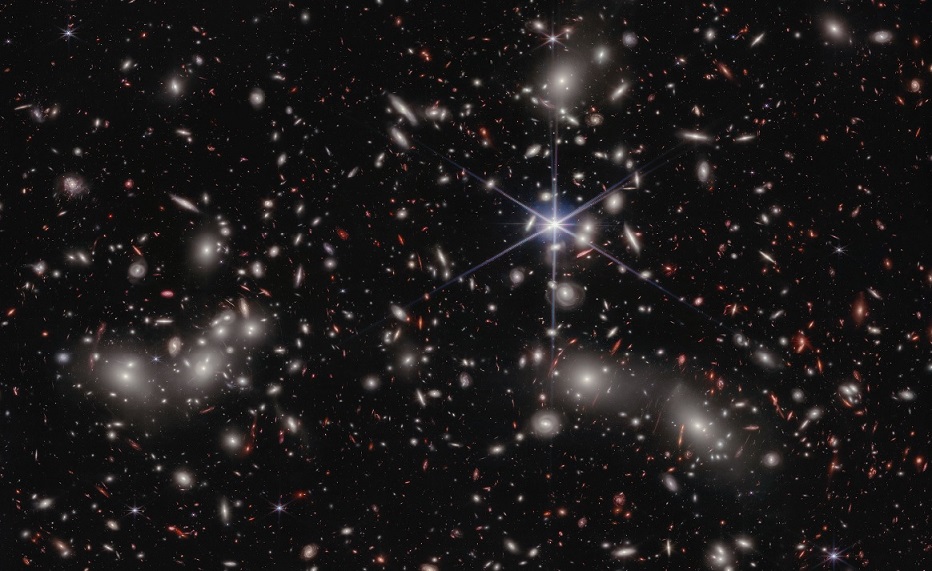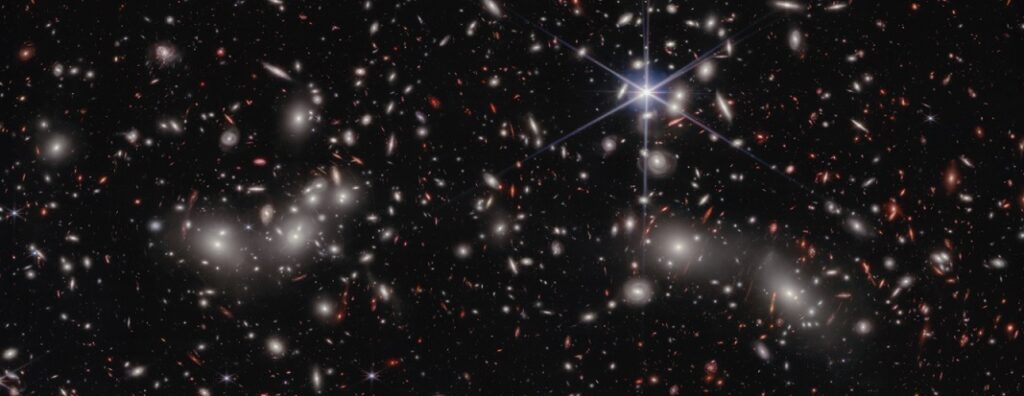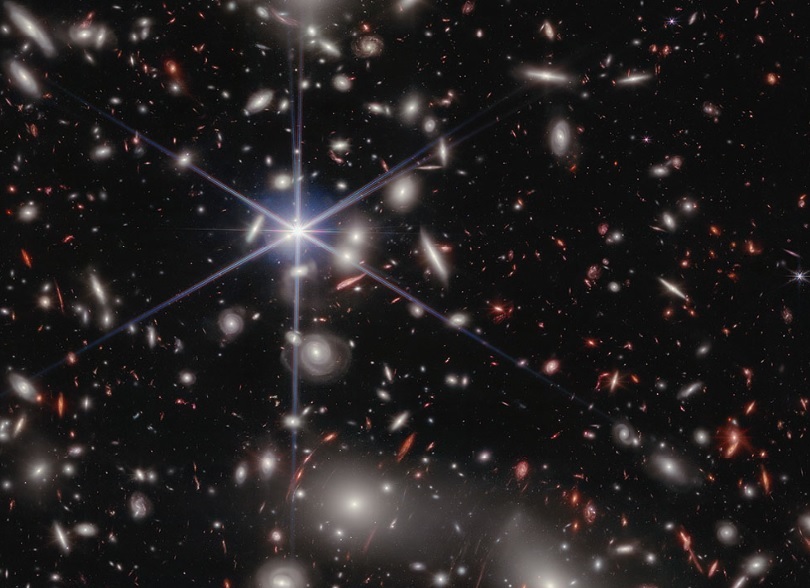Astronomers estimate 50,000 sources of near-infrared light are represented in this image from NASA’s James Webb Space Telescope, reported NASA. Th
Astronomers estimate 50,000 sources of near-infrared light are represented in this image from NASA’s James Webb Space Telescope, reported NASA.
Their light has travelled through varying distances to reach the telescope’s detectors, representing the vastness of space in a single image.
A foreground star in our own galaxy, to the right of the image center, displays Webb’s distinctive diffraction spikes. Bright white sources surrounded by a hazy glow are the galaxies of Pandora’s Cluster, a conglomeration of already-massive clusters of galaxies coming together to form a megacluster, reported NASA.

The concentration of mass is so great that the fabric of spacetime is warped by gravity, creating an effect that makes the region of special interest to astronomers: a natural, super-magnifying glass called a “gravitational lens” that they can use to see very distant sources of light beyond the cluster that would otherwise be undetectable, even to Webb, reported NASA.
These lensed sources appear red in the image, and often as elongated arcs distorted by the gravitational lens. Many of these are galaxies from the early universe, with their contents magnified and stretched out for astronomers to study.

Other red sources in the image have yet to be confirmed by follow-up observations with Webb’s Near-Infrared Spectrograph (NIRSpec) instrument to determine their true nature, as reported by NASA.
One intriguing example is an extremely compact source that appears as a tiny red dot, despite the magnifying effect of the gravitational lens.
One possibility is that the dot is a supermassive black hole in the early universe.
NIRSpec data will provide both distance measurements and compositional details of selected sources, providing a wealth of previously-inaccessible information about the universe and how it has evolved over time, reported NASA.

Astronomers are ‘star struck’
The ancient Greek myth of Pandora, much adapted by different storytellers and cultures, is at its heart a story of human curiosity and uncovering paradigm-shifting knowledge.
In modern astronomy, a region of space where multiple galaxy clusters are merging has been named for the myth and become a favorite observational target for its ability to magnify much more distant galaxies behind it through a natural phenomenon called gravitational lensing, reported NASA.
Using this trick of nature, astronomers use Pandora’s Cluster (Abell 2744) like a magnifying glass to reveal features in the early universe that would otherwise be impossible to observe even for the most powerful telescopes.
Now a team of astronomers has combined the infrared imaging power of NASA’s James Webb Space Telescope with the lens of Pandora’s Cluster to create a detailed image of 50,000 sources, including some never-before-seen features.
Exploration of Pandora’s Cluster with Webb is ongoing, but already there are tantalizing hints of the new understanding of the universe it will uncover, as reported by NASA.


